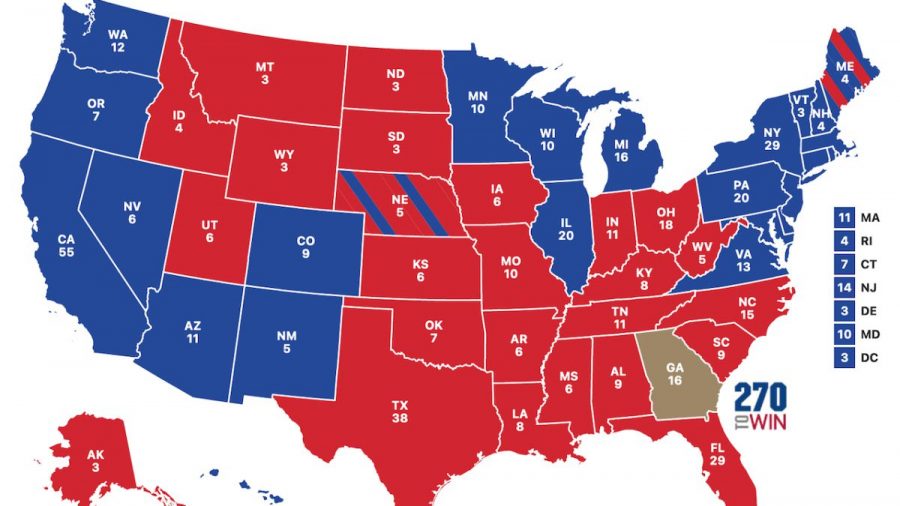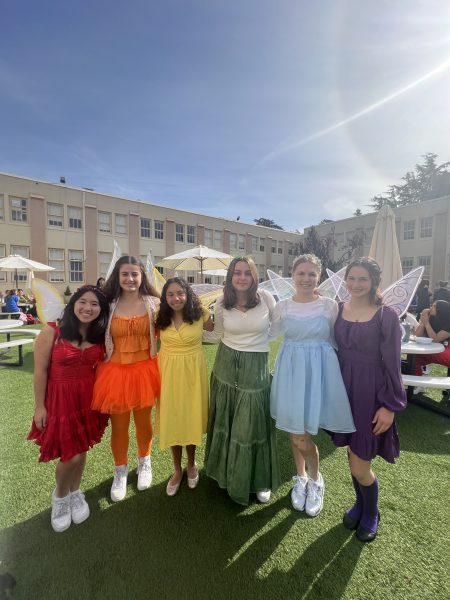What is the Electoral College?
The Catalyst / Sergio Gómez Martín
The 2020 Electoral College is mapped out a few days after Election Day.
The Electoral College is a system that was ratified by the Constitution in 1788. Edited by the 12th and 23th amendments, it sets the steps for the American method of voting and electing the president and vice president.
The origin of the system is based in classism. “The founders loved the idea of democracy, but they were terrified of what people would do with it,” said NDB History Department Chair Jonathan Tomczak. “They were concerned that somebody would come along [for president], who would be very popular, but very unqualified would win a popular vote. The Electoral College is extra protection, so that they [government officials] could step in and pick somebody who is qualified.”
The college includes a total of 538 electors, made up of senators and representatives from the House of Representatives. (There are also three extra for Washington D.C.). Each elector has a vote for that specific state. For example, California has 55 electoral members, so 55 electoral votes.
When it comes to the actual election, 48 states use the “winner takes all” method. This works by discovering the popular vote, and giving all electoral votes to that candidate. Someone’s individual vote goes to increase the percentage of that candidate receiving the votes, not ensuring they will receive it. In California, the popular vote tends to be Democratic, thus all 55 electoral votes go to the Democratic candidate.
The two remaining states, Maine and Nebraska, use a different method referred to as the “district system.” In these two states, a single electoral vote is given to the candidate who wins the popular vote in the congressional district and all other votes are given to the candidate who wins the popular vote statewide.
To win the presidential election, the candidate must reach a minimum of 270 electoral votes, out of the 538. In other words, they have to win over half the country.
In recent years, the Electoral College has sparked some controversy. The electors do not need to vote with the popular vote, and this often reflects badly on the democratic process. Many Americans use this as evidence as to why their vote does not matter. Even though citizens can influence the decision, it is the government officials who really make the choice.
Similarly, people in states like Montana and Wyoming have more influence than people in more populated states like California. When looking at the population ratio of 550,000 people to 3 votes (Wyoming) and California’s 39.9 million to 55 votes, it is overwhelmingly unequal.
The electoral system has been in place for over 200 years, and many are beginning to question the necessity in the modern age of fast news and technology. Perhaps in the future, America will move past it and onto another method. But as of right now, the college and all 538 members are in control of the American race to presidency.

Brooke Horvai is a member of the Class of 2022 at Notre Dame High School in Belmont, CA (NDB). She is the assistant opinion editor for the school newspaper,...











